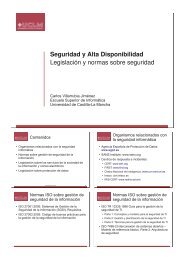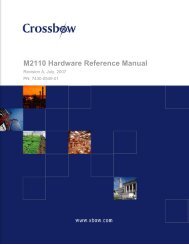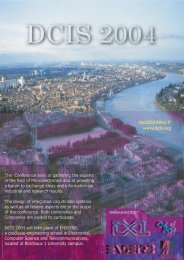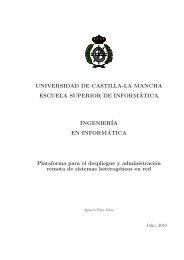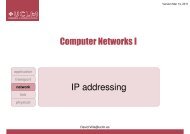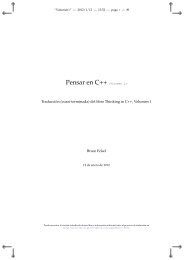Artificial Intelligence Techniques for Smart Grid Applications
Artificial Intelligence Techniques for Smart Grid Applications
Artificial Intelligence Techniques for Smart Grid Applications
You also want an ePaper? Increase the reach of your titles
YUMPU automatically turns print PDFs into web optimized ePapers that Google loves.
Green ICT: Trends and Challenges<br />
Figure 2: <strong>Artificial</strong> <strong>Intelligence</strong> and Computational <strong>Intelligence</strong> <strong>Techniques</strong> and their Contribution to the Advanced<br />
Features of the <strong>Smart</strong> <strong>Grid</strong>.<br />
<br />
The regulatory challenges<br />
are related to the establishment<br />
of standards that, at different<br />
levels, specify the basis<br />
<strong>for</strong> interoperability required to<br />
make smart grids feasible<br />
<br />
<br />
Several smart grid<br />
technologies resort to a wide<br />
variety of intelligent solutions<br />
to tackle uncertainty<br />
and unpredictability;<br />
<strong>for</strong> example, the Active<br />
Network Management<br />
magnitudes and angles.<br />
Wide area monitoring applications do also benefit from<br />
the potential of the ANN-based methods. The work in [29]<br />
describes the implementation of a system intended to identify<br />
the dynamics of the non-linear power system. Neural<br />
networks have demonstrated their capability to detect in real<br />
time the changing dynamics of power systems. Whenever<br />
such changes are identified, an additional ANN can be employed<br />
to generate the appropriate control signals that minimize<br />
those negative effects [30].<br />
Evolutionary algorithms (EA) [31], and more specifically<br />
genetic algorithms, have gained great relevance due<br />
to their capability to successfully address optimization problems<br />
with a relatively low demand of computational resources.<br />
Genetic algorithms are inspired in the evolutionary<br />
principle of natural selection [32] and they consists in<br />
the encoding of a set of plausible solutions, as though they<br />
were the initial population, out of which the fittest members<br />
are favored to create the next generation of solutions.<br />
This methodology is intended to remove, in recursive iterations,<br />
those solutions that are considered poor. Additionally,<br />
the work in [32] provides a list of the different applications<br />
of genetic algorithms in the field of the energy systems.<br />
A specific example of an application can be found in<br />
[33], which resorts to a genetic algorithm method with a<br />
twofold aim: firstly, a genetic algorithm is used to generate<br />
a feasible solution, constrained to the desired load convergence<br />
and secondly, a genetic algorithm is used to optimize<br />
the obtained solution. The work in [34] also resorts to a<br />
genetic algorithm approach <strong>for</strong> efficiency enhancement,<br />
demonstrating that those fuzzy controllers implemented by<br />
means of genetic algorithms obtained optimum results (both<br />
<strong>for</strong> entire and discrete time intervals).<br />
Finally, the last approach considered in this review of<br />
computational intelligence methods is Fuzzy Logic (FL)<br />
[35]. There are many processes in the smart grid that in-<br />
46 CEPIS UPGRADE Vol. XII, No. 4, October 2011 © Novática



